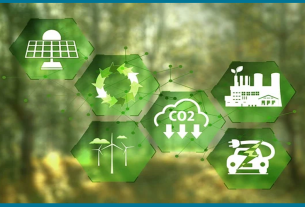In our ‘Field Diaries’ series, The Applied Ecologist is sharing stories from a range of different fieldwork experiences. In this post, Cassidy Waldrep shares her story working with waterfowl across the Atlantic Flyway.
In the waterfowl world, many biologists grow up with a love for ducks and geese, some having hunted since they could walk. For me, this was not the case. I grew up with a love for nature and animals, yet I never hunted, and to be honest, I didn’t even know there were more species of ducks beyond the mallard. When the opportunity arose to apply to graduate programmes, I found one studying mallards on the east coast of North America using transmitters. Since my undergraduate research focused on using transmitters on box turtles, I figured I’d be a good fit. Little did I know then that applying for that position—and ultimately accepting it—would awaken an underlying love for ducks that must have been hidden my whole life.

The project
I’m currently a PhD student in Biology at the University of Saskatchewan and one of the primary researchers on the Eastern Mallard Project. My research focuses on studying the behaviour, reproductive success, and habitat of eastern mallards throughout their full annual cycle. To achieve this, the project has deployed over 1,200 GPS-ACC tracking devices on female mallards across the Atlantic Flyway since 2022, alongside more than 1,200 geolocator devices — one of the largest mallard tracking projects to date.
As part of my graduate studies, I was tasked with travelling to the east coast in winter 2024/2025 to help the 14 states and three provinces we collaborate with deploy transmitters. The issue? I knew nothing about ducks or attaching transmitters, for that matter. The result? An exhilarating six weeks of learning, making mistakes, crying, and, most importantly, growing my confidence as a female scientist.
The fieldwork
My project is unique in that biologists across the Atlantic Flyway deploy my transmitters and geolocators for me, whether or not I’m there. Due to the extensive number of units (over 2,500 across four years) requiring deployment, it would be impossible for a single student to travel from Ontario down to South Carolina to complete all the fieldwork alone. Because of this, my fieldwork is more like a field trip — I have the opportunity to travel to different states and provinces, assisting biologists with baiting, setting traps, and, ultimately, catching ducks and attaching units.
New York
At the end of January 2024, I began my journey in Brockport, NY, learning the basics: how to age ducks, take measurements, and attach a transmitter (I say “basics”, but it was a lot of information). The day was filled with mixed emotions — excitement and joy at holding my first duck, yet also an immediate and overwhelming feeling of imposter syndrome. How was I supposed to remember all of this?

© John Coluccy ([email protected])
Rhode Island
Next, I travelled to Rhode Island, where I met up with RI waterfowl biologist Jennifer Kilburn. Here, I experienced my first rocket net shot. To keep it brief, rocket netting uses charges that, when detonated, propel a net over a group of ducks. We had to wake at 3:30 am, arriving and setting up the net under cover of darkness, then waiting for a few hours before the ducks approached. Suddenly, a giant BOOM went off—the rockets had fired. I ran to the net, breathing heavily, mud from the marsh flying everywhere. Yet in that moment, looking over the net, hair blowing in my face, the anticipation of banding ducks surging through me, I realised why I was falling in love with this job.
Later that week, Jenny introduced me to my first common eider, bufflehead, black scoter, surf scoter, and harlequin duck (cue the tears I mentioned earlier).
New Jersey, Maine, Nova Scotia
My journey continued with banding work in New Jersey, Maine, and Nova Scotia. In New Jersey, I refined my banding skills and added 11 new birds to my list. In Maine, I learned the hard way not to wear muck boots in the car with thick socks — sweating inside, then stepping into the cold for four hours, can cause moderate hypothermia. In Nova Scotia, I discovered how snow is extremely beneficial for trapping ducks while also gaining more experience with banding and ageing mallards.

Virginia, Maryland, Delaware
Although we didn’t catch any ducks in Virginia, I assisted with baiting sites and, most excitingly, goose banding. The best part? Sitting in a cage with 100 geese (and no, they don’t try to attack you). In Maryland, I witnessed the efficiency of a well-organised banding operation — some people banding, others recording data, and others attaching geolocators or transmitters. Delaware exposed me to swim-in traps and how they can be used to capture ducks as well.

Conclusion
Six weeks on the East Coast immersed me in waterfowl fieldwork and transmitter attachment. I started unsure, struggling to handle birds, but after countless hours in the field, I became a confident biologist, loving the field more and more every day. If you ever feel “behind” or not knowledgeable enough in your field — because you’re just a grad student — know that it’s okay to ask questions and learn. We all have to start somewhere.
A year ago, I was nervous to fly out, fearing I wasn’t capable. Now, after my second successful field season, I wish I could tell younger Cassidy — it was all going to be okay.

Discover more posts from our ‘Fieldwork Diaries‘ blog series here. If you have an idea for a blog that would fit into this series, please contact Catherine Waite.
